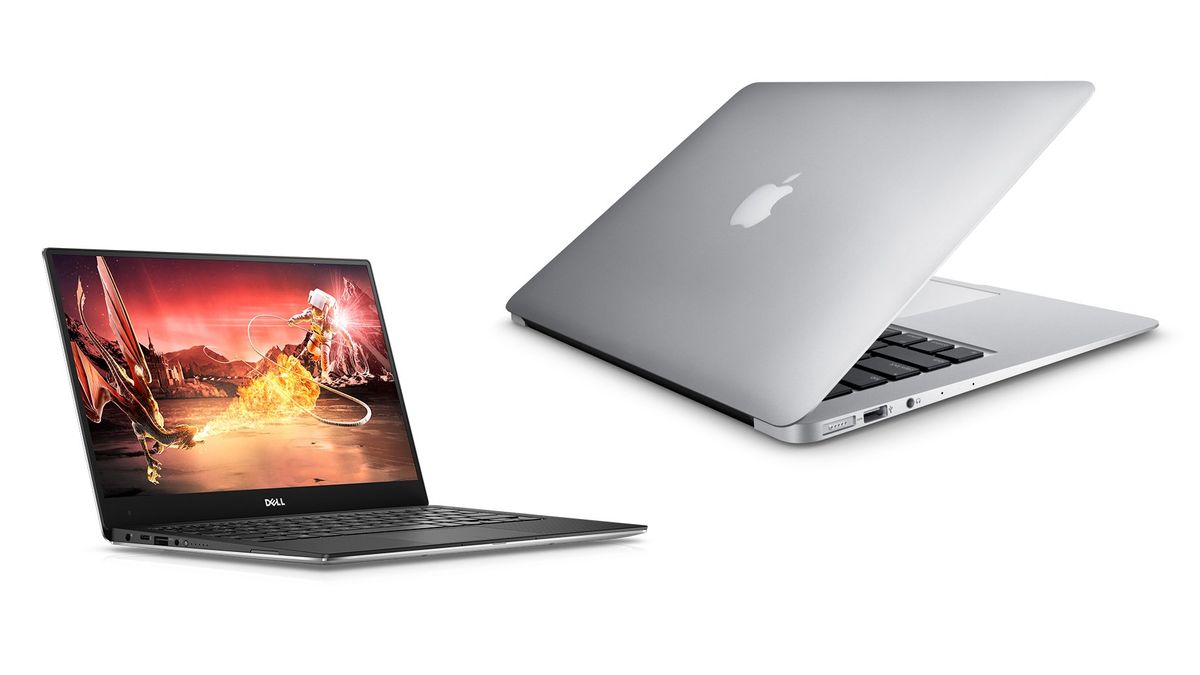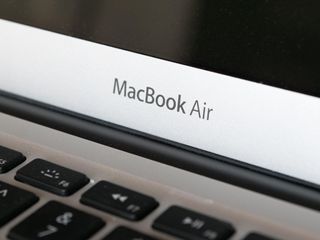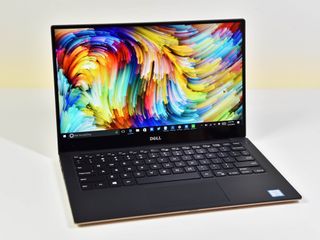Dell XPS 13 versus MacBook Air: Which should you buy?
Both are thin, light and fairly expensive. So which deserves your money?

Which one of these two laptops has been updated three times since it first launched with newer hardware inside while the other has been left to pasture yet is still sold at a high price? Hint: It's not Apple that's been updating anything.
It may seem a little unfair to compare a brand new model with a year's old MacBook Air, but the truth is, it's one of the important comparisons to make. Both are still sold, both are premium ultrabooks and you, the savvy consumer, should know knows exactly what you're going into before parting with your cash.
So, in the battle of the ultralights, which comes out on top?
Update 27 January 2017: We've refreshed this post to reflect the latest model of the Dell XPS 13 (9360) and the hardware improvements it brings.


Let's start at the top and break out the hardware specs first.
| Category | Dell XPS 13 | MacBook Air |
|---|---|---|
| Operating System | Windows 10 | macOS |
| Display | 13.3-inch 1920 x 1080 (non-touch)3200 x 1800 (touch) | 13.3-inch 1440 x 900 (non-touch) |
| Processor | Intel Core i3/i5/i7 {7th generation) | Intel Core i5/i7 (5th generation) |
| Graphics | Intel HD 620 | Intel HD 6000 |
| Storage | 128GB SSD, 256/512GB/1TB PCIe SSD | 128/256/512GB SSD |
| RAM | 8/16GB | 8GB |
| Battery | 60 Wh | 54Wh |
| Dimensions | 304 x 200 x 15 mm | 325 x 227 x 30-170mm |
| Weight | 1.29kg (2.8lbs) | 1.35kg (2.96lbs) |
| Price | From $799 | From $999 |
Design has traditionally been Apple's strong suit, with a long history of aesthetically-pleasing products that stand out from the crowd. But while the MacBook Air has stayed the same for a number of years, Windows laptops have quickly caught up, and in some cases have surpassed Apple's design prowess.
The XPS 13 is one such contender, and there's no denying it's one of the finest looking laptops money can buy. The almost bezel-free InfinityEdge display has a lot to do with that, as does the aluminum and carbon fiber body. It's not as ultimately slim as the MacBook Air, but there's more hardware squeezed inside.
Get the Windows Central Newsletter
All the latest news, reviews, and guides for Windows and Xbox diehards.
It's also squeezed inside a more compact body. One of the crowning design features of the XPS 13 is that you're getting a 13.3-inch notebook in the form factor of something like Apple's old 11-inch MacBook Air. That's what bezel-trimming gets you.

Inside is where the two start to really separate. The MacBook Air has a lower resolution, non-touch display, a fixed 8GB RAM option and a now two-generations-old processor. The XPS 13 has options for a glorious QHD+ touch display, up to 16GB of RAM and has been refreshed with Intel's latest, 7th-generation Kaby Lake processors. You also get up to 1TB of lightning fast PCIe SSD storage in the XPS 13, though it's easy enough to buy a smaller drive and upgrade it down the line. You can also upgrade the MacBook Air SSD should you wish, but out of the box you get a maximum of 256GB, with a configuration for 512GB available should you request it at order.
The pricing is where things split fairly evenly. Strictly speaking, the XPS 13 is a better match for the MacBook Pro, or at least it is towards the higher end of its spec list. The lower spec models are a more even match in hardware and price.
The XPS 13 starts at $799, while the MacBook Air is priced from $999. You can spend much more on a fully specced XPS 13, but you'll get a lot more laptop for that money if you do. But it'd be fair to call it a mostly even playing field. If the MacBook Air had some of the options the XPS 13 does, you can imagine it would at least match Dell's price, if not go above. These are both premium ultrabooks, though, with a price to go with it.
All the hardware, design and price considerations mean little though if you're set on one particular operating system. Windows 10 or macOS are your choices, and which one you prefer may have a bigger influence in your overall buying choice.


However, unless you're invested in Apple services, macOS isn't necessarily a winning choice. Microsoft's major products like Office and OneDrive all work on macOS, and there are a host of third-party cross platform software solutions like Adobe Creative Cloud.
macOS does, however, have one advantage that Windows 10 does not: you can run Windows on macOS, either by setting up a dual-boot or using a VM solution such as Parallels. On Windows 10 that's all you get; Apple doesn't just let people download macOS to use on their own machines.
Both have app stores, both have content ecosystems, and both have access to iTunes. You can even sync iCloud to Windows if you're also an iPad or iPhone owner.
Ultimately it will come down to which experience you prefer and what you're going to be using on your laptop. Windows 10 is less divisive than Windows 8 before it, while macOS hasn't gone through a significant UX change in some time. Unless you need Apple apps, Windows 10 has at least as much to offer, and in most cases, you'll be better served finding an alternative to Apple's apps, anyway.

Lots of people buy the MacBook Air and are very happy with them. But right now, in 2017, there's not a strong case to buy one. If you're absolutely set on an Apple laptop, the MacBook Pro is a better option all-round. The MacBook Air is starting to show its age. And if you're really looking for super thin and light, there's always the 12-inch MacBook.
But if you're not drawn like a moth to the emblem on the lid, the Windows ecosystem has a lot to offer. The Dell XPS 13 is without doubt one of the best laptops you can buy right now, regardless of operating system. It's a glowing reference point of what can be done in a current notebook, melding design, hardware and a range of prices that don't just include those spending the most. And it's not doing this through a senseless race to be the thinnest, either.
Which of these two should you buy?: The Dell XPS 13. It's more up to date and better value for your money.

Richard Devine is a Managing Editor at Windows Central with over a decade of experience. A former Project Manager and long-term tech addict, he joined Mobile Nations in 2011 and has been found on Android Central and iMore as well as Windows Central. Currently, you'll find him steering the site's coverage of all manner of PC hardware and reviews. Find him on Mastodon at mstdn.social/@richdevine